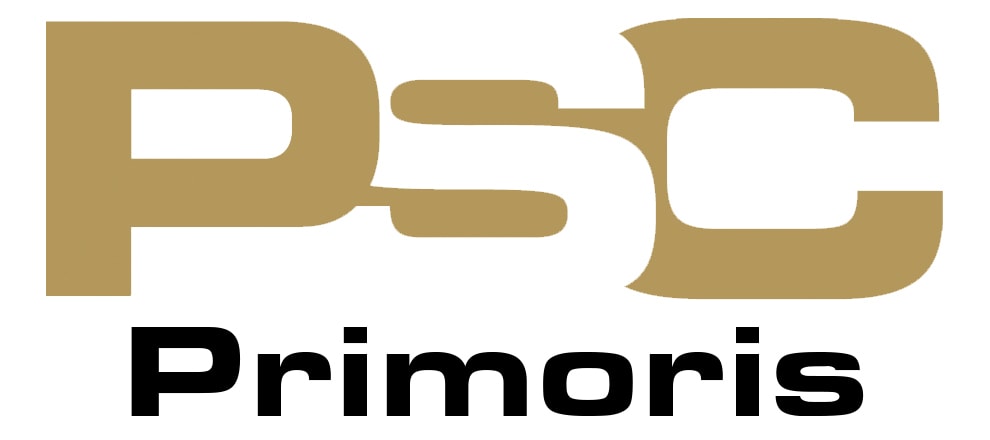Succession Planning SERVICES
Create a succession plan that will prepare
your next generation of talent.
Succession planning is a critical aspect of any organization’s long-term success. It provides a roadmap for ensuring continuity during times of change. Whether it’s due to retirement, promotion, or unforeseen circumstances, having a well-designed succession plan in place is essential for smoothly transitioning leadership roles and maintaining business momentum.
For more than 50 years, SIGMA’s experts have combined evidence-based theory with practical industry experience to deliver effective succession planning solutions. Explore our succession planning services below.
Succession Planning Sprint
Need a succession plan today?
Get started immediately with SIGMA’s Succession Planning Sprint. Our consultants deliver a customized succession plan for each of your leaders in just 30 days.

Succession Planning Consulting
Looking for a customized solution?
Our consultants work with you to create a project plan that meets the unique needs of your organization. Engagements can be as large or as small as needed.

Not sure where to start? Take SIGMA’s Succession Planning Diagnostic.
Complete a 5-minute succession planning survey to receive customized resources and unlock a free 30-minute follow-up consultation with one of our experts.
Ensure the Implementation
67% of strategic plans fail due to poor execution.1 Don’t let your succession plan become one of them. SIGMA offers Succession Transition services and Acceleration Workshops designed to help you ensure your plan is implemented properly and on time.
Trusted by more than 8,500 organizations across North America, including:
What Our Clients Have to Say
Ready to Start Succession Planning?
Tell us more about your needs so that we can discuss a solution that’s right for you. Fill out the form below and our team will be in touch with you shortly.
Looking for resources to help your succession planning efforts?
Visit SIGMA’s Succession Planning Template Library for free form-fillable PDF templates, and refer to our Succession Planning FAQ for answers to frequently asked questions.
Succession Planning Guide
Everything you need to get buy-in from senior leaders and begin building a comprehensive succession plan today.

Succession Planning Training
Complete SIGMA’s online, self-guided training. These five modules will give you a comprehensive introduction to the succession planning process.

Our Succession Planning Process
IDENTIFY CRITICAL ROLES
Determine which roles your organization should target through its succession program.
BUILD SUCCESS PROFILES
Describe the talent composition required for each critical role today and in the future.
NOMINATE SUCCESSORS
Choose candidates for each critical role through a nomination survey.
ASSESS DEVELOPMENT NEEDS
Summarize each candidate’s talent profile and identify gaps to target through development.
DEVELOP TALENT
Prepare development plans for candidates and track their development activities.
MEASURE PROGRESS
Measure the impact of your succession plan.
Succession Planning FAQs
These are some of the most commonly asked questions we hear in regard to succession planning. Can’t find what you’re looking for? Give us a call! We’d be happy to answer your question.
Every organization has different needs when it comes to succession planning. Our succession planning process is supported by data-driven assessments that help your organization make the appropriate decision about who is next in line.
- Identify critical roles: Prioritize roles that might be urgent due to upcoming exits or retirements or are critical to business success.
- Understand critical roles: Determine what is required to perform the role now as well as in the future, due to potential changes in the industry, or other determining factors.
- Nominate potential successors: Identify potential candidates for succession and determine current ability to address succession in critical roles.
- Assess potential successors: Determine the degree of readiness of potential successors to take over critical roles.
- Develop potential successors: Foster development of potential successors by leveraging coaching and training opportunities.
- Measure progress: Use objective and subjective measures to track the progress of candidates and readiness for transitioning potential successors into critical roles.
For more information on SIGMA’s succession planning process check out our succession planning template and the succession planning webinar.
The steps to developing a succession plan are outlined above in the simple succession planning process. In addition to the 6-step succession planning process, the following are important to keep in mind when creating a succession plan.
- Succession planning should be a company-wide initiative involving senior management and employees, not just HR.
- Focus on finding the best candidate for each role, not just seeking adequate replacements.
- Transparent and frequent communication with all involved is an important way to maintain enthusiasm and commitment to the initiative.
Measure the maturity of your succession plan with SIGMA’s succession planning success checklist.
When done properly, succession planning can:
- Protect your organization from unforeseen exits and retirements and help the organization remain flexible in the face of staffing challenges.
- Retain top talent within your organization and identify meaningful development opportunities by starting a dialogue about employee interests and ambitions.
- Attract candidates by hiring with your succession plan in mind. Clearly identify the applicants interested in future development opportunities and help them visualize their potential career trajectory within your organization.
- Identify potential succession opportunities for qualified candidates to help improve the diversity among senior positions.
Consider the following criteria when identifying critical roles for succession planning:
- Impact of the role on business operations
- Availability of external succession candidates
- Availability of internal succession candidates
- Uniqueness of skills or knowledge required for position
Download SIGMA’s critical role identification questionnaire to determine the key positions within your organization.
| Succession Planning | Replacement Hiring |
| A long-term approach to talent management | Reactionary and occurs only when there is an immediate need |
| Integrates with broader company policies | Driven by operational needs |
| Allows for effective decision-making because candidates can be developed to meet role requirements and carefully compared |
Defaults to a single candidate without comparing a broad range of candidates |
Avoid replacement hiring with the succession planning vs replacement hiring checklist.
For your succession plan to be successful it is important to dedicate the time and resources needed for the initiative. Begin by outlining a systematic process to develop and implement your plan, or leverage an already proven process. Make sure you build in accountability and track the progress of your succession plan and include objective and subjective measures to evaluate your success.
There is no better place to start than our Succession Planning Launch.
It is important to be transparent when communicating with your employees about succession. This includes successes, setbacks, and challenges. Maintaining regular communication with your staff can help you gain employee buy-in and enthusiasm about the process. By obtaining buy-in from senior management you can leverage them as credible channels to communicate succession planning information within your organization.
Having a proper succession plan can save your organization a lot of money. According to a recent study by Harvard Business Review (HBR), the S&P 1500 forgoes close to $1 trillion in market value each year due to poorly managed CEO and C-suite transitions. HBR estimates that better succession planning alone could help increase annual company valuations and investor returns by 20-25%. The absence of a strong leadership bench can be detrimental to both employee, shareholder, and public relations. Read our blog to learn more about how a good succession plan saves money, and contact us regarding pricing information for SIGMA’s Succession Planning Launch.
To begin succession planning, start by considering the core values of your organization and how they might be achieved through succession. This will help you determine the goals you want to achieve with succession planning. Identify any industry trends and challenges that might be faced by the organization in the future to proactively address these situations in your plan. Remember to take into account organization-specific statistics on turnover, retirement, and promotion to target important outcomes for the organization.
Take the first step towards developing a detailed implementation plan by scheduling your Succession Planning Launch.
The best time to start a succession plan is now. As a strategic initiative, succession planning can take time before you begin to see positive results. The earlier you begin your succession plan, the more prepared you will be for unexpected vacancies in critical roles in the future.
In order to know whether or not your succession plan is working it is important to measure the progress of your plan. Your formal succession plan should be evaluated on a regular basis with both objective and subjective measures.
Examples of objective measures include the percentage of position you are able to fill internally or the number of years it takes for the average candidate to be ready for a new role. Subjective measures such as employee engagement or job satisfaction are also important.
Whichever metrics you choose, be sure that they are related to your succession planning goals and that they are things you can measure regularly.

The Costly Consequence of Insufficient Planning
Succession planning is a critical process that ensures organizations have the right people in place to fill key leadership roles when they become vacant. Despite its importance, many organizations neglect to plan for succession.

A Case Study on Succession Planning
Sandy is the Vice President of Human Resources (VP of HR) at a mid-sized tech company in California. Her company has a strong executive team, however, most of them are legacy employees quickly approaching retirement.

SIGMA’s Succession Planning Guide
Succession planning is a strategic process that ensures operational continuity when talent changes occur. SIGMA’s Succession Planning Guide makes this process simple by walking you through what is required at every stage.
Ready to Start Succession Planning?
Tell us more about your needs so that we can discuss a solution that’s right for you. Fill out the form below and our team will be in touch with you shortly.
1Carucci, R. (November 13, 2017). Executives Fail to Execute Strategy Because They are Too Internally Focused. Harvard Business Review. Retrieved from https://hbr.org/2017/11/executives-fail-to-execute-strategy-because-theyre-too-internally-focused.






























